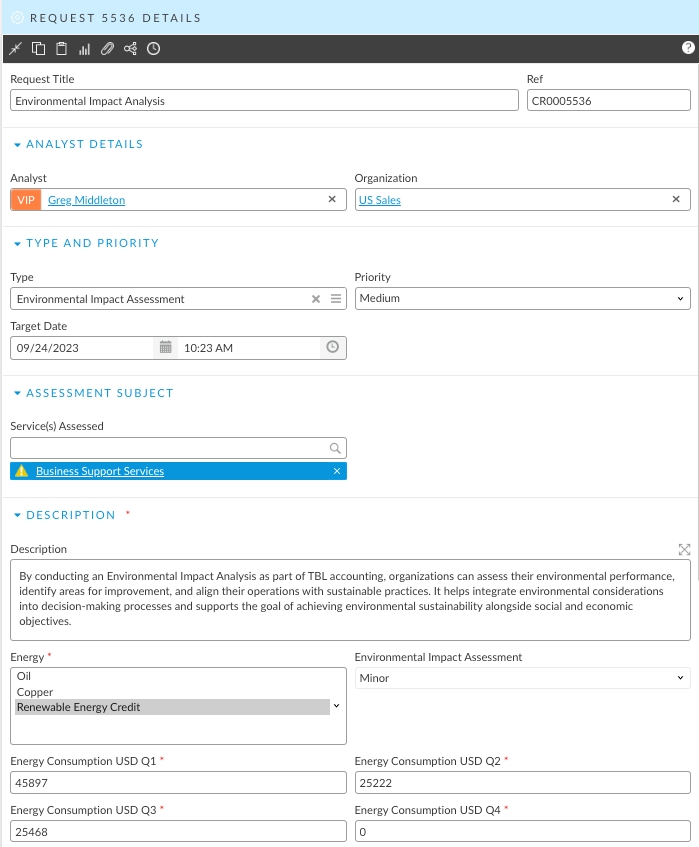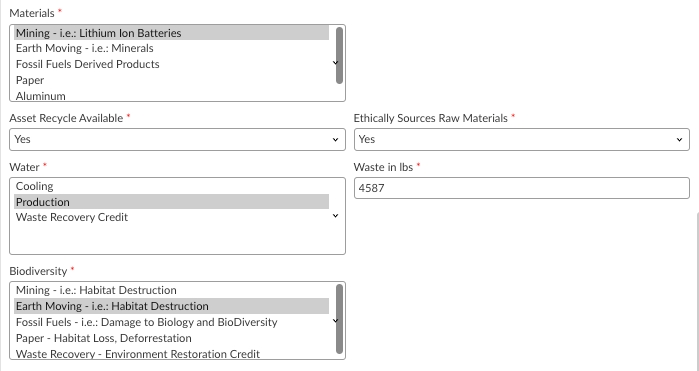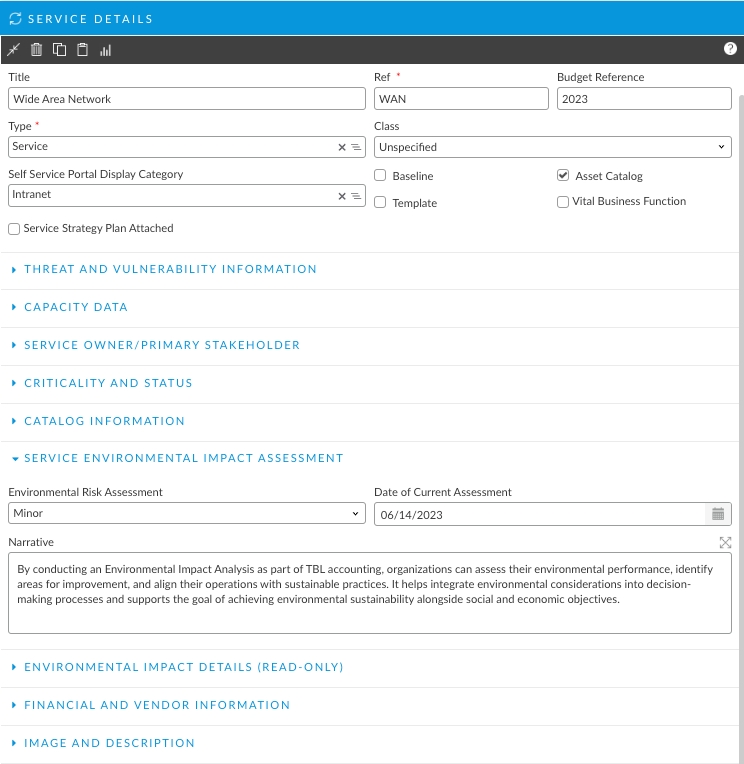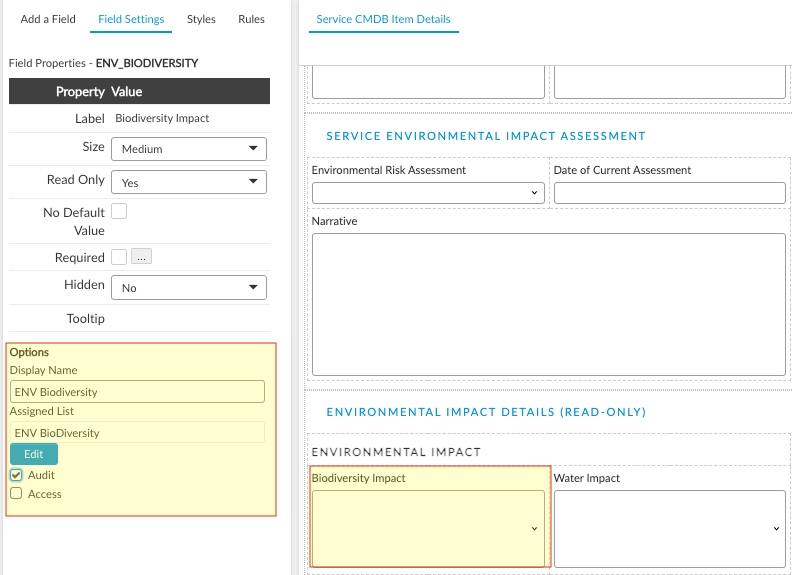Environmental Impact Analysis (for TBL Accounting)
EIA is a method used to measure and account for the environmental impact of business operations alongside social and economic factors.
This section is designed to show you how to take the capabilities of ASM and leverage them to solve your own business and process issues. Each section gives a condensed, self-guided workshop on implementing the given capability. Many times, the content will refer you to specific ASM Product Documentation pages, rather than repeat what has already been documented.
Scope of EIA in TBL Accounting
In TBL (Triple Bottom Line) accounting, an Environmental Impact Analysis (EIA) refers to the process of assessing and evaluating the environmental effects and consequences of an organization's activities, products, or services.
The purpose of conducting an EIA within TBL accounting is to quantify and understand the environmental implications of business practices, enabling organizations to make informed decisions and take appropriate actions to minimize negative environmental impacts. It involves analyzing various aspects of an organization's operations, including resource consumption, emissions, waste generation, and ecological footprint.
Required Parts/Components
The steps involved in conducting an EIA in TBL accounting may include:
Identification and Scope:
Identify the activities, processes, or projects to be assessed.
Define the boundaries and scope of the analysis.
Data Collection:
Gather relevant data related to resource usage, energy consumption, emissions, waste generation, and other environmental indicators.
Use tools such as life cycle assessments, environmental audits, and carbon footprint calculations to collect accurate and comprehensive data.
Impact Assessment:
Evaluate the collected data to assess the environmental impact of the organization's activities.
Identify potential environmental risks, hotspots, and areas of concern.
Quantification and Valuation:
Quantify the environmental impacts using appropriate metrics and units.
Assign values or costs to the impacts to reflect their significance and enable comparison.
Interpretation and Reporting:
Analyze the results of the EIA to gain insights into the organization's environmental performance.
Prepare comprehensive reports and communicate the findings to stakeholders.
Mitigation and Improvement:
Develop strategies and initiatives to mitigate the identified environmental impacts.
Set targets and implement measures to improve the organization's environmental performance.
By conducting an Environmental Impact Analysis as part of TBL accounting, organizations can assess their environmental performance, identify areas for improvement, and align their operations with sustainable practices. It helps integrate environmental considerations into decision-making processes and supports the goal of achieving environmental sustainability alongside social and economic objectives.
Implement Environmental Impact Analysis in ASM
To set up an Environmental Impact Analysis (EIA) workflow in Alemba Service Manager, you can follow these steps:
Define the Workflow Stages
Configure Custom Forms and Templates
Design Process Flows
Integrate Document Management
Reporting and Analytics: Define key performance indicators (KPIs) and metrics to measure the effectiveness of the workflow.
By following these steps, you can establish an Environmental Impact Analysis workflow within Alemba Service Manager, enabling efficient management of the EIA process and facilitating environmental sustainability initiatives within your organization.
Example Workflow Template for Environmental Impact Analysis
The workflow template will gather and perform the assessment. The results can be captured on the request and then written to the CMDB Items assessed using a Manage CMDB task. See also:
Adding Transactions to a Manage CMDB Task
Mapping Fields to be updated by a Transaction
Field Calculations and Risk Calculation


Example Service with an EIA attached
You can update the results of the Environmental Impact analysis directly to the service and therby closing the loop on the assessment. This also exposes the data to the service and allows you to use it for reporting and additional analytics that you will need for your TBL Accounting program.



Last updated
Was this helpful?